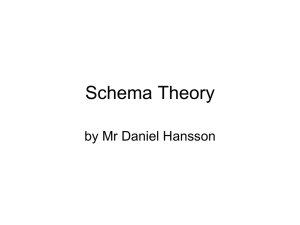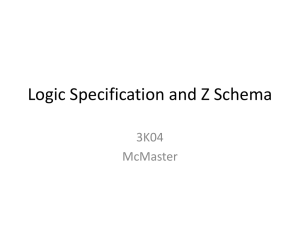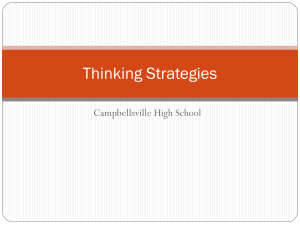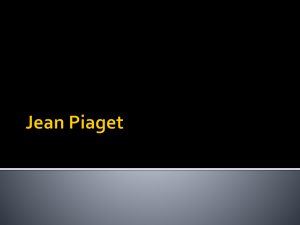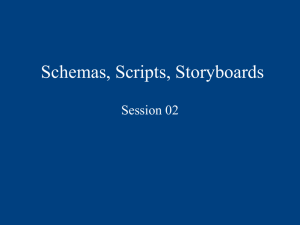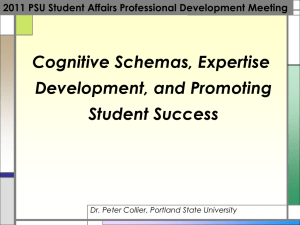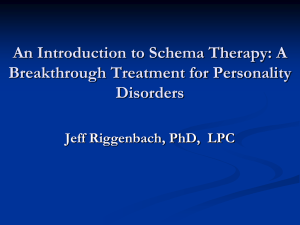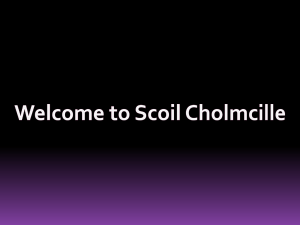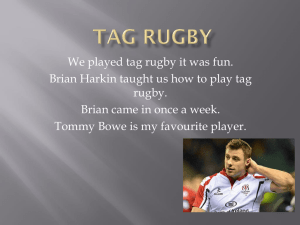AS Physical Education
advertisement
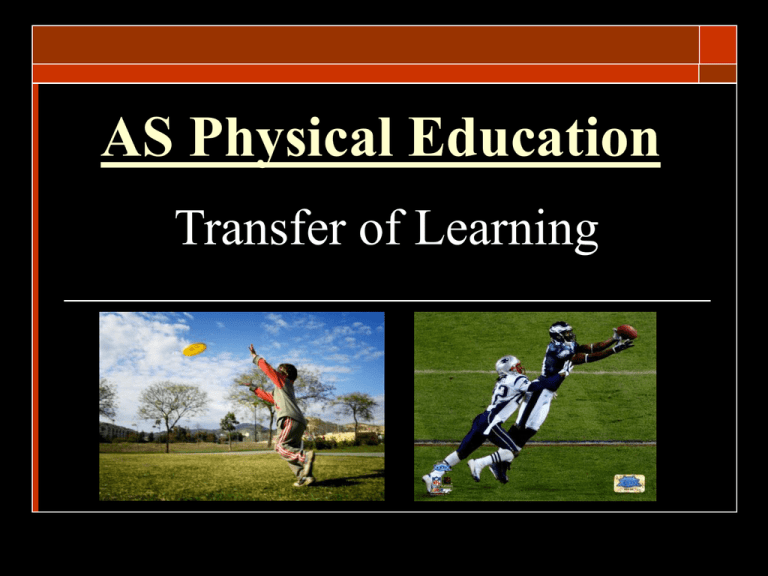
AS Physical Education Transfer of Learning What is transfer? ‘The influence that one skill has on the learning and performance of another.’ Important links between ‘transfer’ and Schema Theory All learning is based on some form of transfer. After early childhood all new patterns of movement arise out of previous experience Positive transfer Occurs when one skill enhances the learning and performance of another. E.g. The skill of throwing transfers positively to the racquet arm action of a tennis serve. Positive Transfer Often performers are proficient in a number of activities Natural abilities e.g. balance, co-ordination, explosive strength Abilities help formulate patterns of movement (schemas) that relate across different activities This relationship is positive transfer Australian primary schools target abilities to teach fundamental movement skills/patterns e.g. catching, kicking, over-arm throwing to provide a ‘pool of experience’ or schemas These movement schemas can be utilised later in learning more complex skills/patterns (sports specific skills) Negative transfer Arises when one skill hinders or impedes the learning and performance of another skill. E.g. loose wrist required to play a badminton shot transfers negatively to the firm wrist needed to play a tennis shot. Negative transfer Transfer can also be negative i.e. impede the learning of new skills e.g. rounded swing in golf compared to the straight bat swing needed in cricket, use of wrist in badminton/tennis Transfer appropriate processing: this may even occur in instances where motor skill transfers negatively such as badminton vs tennis Cognitive information processing may be similar such as need for shots to be timed and directed over a net Therefore skills may have different patterns of movement/schemas but similar information processing requirements (transfer appropriate processing) Other types of transfer Proactive transfer: previous skills influence learning of new ones e.g. over-arm throw > tennis serve Retroactive transfer: new skills impact on previously learnt ones e.g. a goalkeeper who takes up rugby as a 2nd row may find his jumping and catching skills in soccer have improved due to his rugby experiences Bilateral transfer: skills learnt by one side of the body are transferred to the other e.g. dribbling a basket ball or lay-up shot with equal competence with either hand. This will require a transfer of movement patterns as well as transfer appropriate processing from theory to practice Other types of transfer Principle to skill: ideas, strategies and tactics of one game can transfer to another e.g. invasion sports/net games Near transfer: use of similar situations in practice to game e.g. attack vs defence, team runs, small sided games Far transfer: use unrealistic approach e.g. forward passing in rugby to improve handling skills or getting a goalkeeper to catch a rugby ball Ability to skill: natural abilities nurtured into specific skills e.g. fast and powerful youngster into sprinter Practice to performance: match and competitive conditions must be replicated in practice to ensure link between ‘rehearsal and reality’ e.g. full practice matches before a world cup How can we ensure positive transfer? Make training as realistic as possible. After initial learning of skill use game related situations and live opposition rather than unopposed. Thorndike suggests ‘identical elements theory’ that more similar components of practice to game, the more likely positive transfer to occur How can we ensure positive transfer? Start with basics then make skill more complex e.g. grip on rugby ball then actual pass How can we ensure positive transfer? Point out to player when transfer can be used e.g. netball shot to start with in basketball, then refine it How can we ensure positive transfer? Use positive reinforcement to strengthen correct transfer How can we ensure positive transfer? Learn in groups of activities requiring similar abilities e.g. passing and catching that require coordination Key terms Schema Generalised movement A store of information and experience Adaptations of movement that will transfer to influence the performance and learning of other skills. Transfer The influence of one skill on the learning and performance of another skill. Schema theory (Schmidt, 1975) Based on the idea that motor programmes are not stored as separate items as presented by the open loop theory. Instead they are retained in long-term memory as relationships with motor programmes. These relationships are termed generalised movements and they allow the performer to adapt quickly in response to a situation. Schema theory (Schmidt, 1975) Schema is a build up of experiences which, the theory states, can be adapted in order to meet the demands of new situations. These relationships between muscular proprioception and actual responses are stored after they have been experienced. Schema theory (Schmidt, 1975) Schema theory states that the performer stores four items of information in the memory after each movement. Knowledge of Initial Conditions Knowledge of Response Specifications Knowledge of Sensory Consequences Knowledge of Movement outcomes. Knowledge of initial conditions This includes the position of the body and aspects of the environment. When about to shoot, a basketball player will take into consideration the position of his feet, his body, how far away he is from the basket and the position of his opponent. Knowledge of Response Specifications These are the specific requirements of the skill to be performed at that particular moment. This will have the effect of recalling an appropriate motor programme. The Basketball player will ‘tell himself’ what actions need to take place, including the appropriate technique, the required pace of the ball and the angle of the shot. Knowledge of Sensory Consequences These are the feelings associated with the movement that are recorded in the memory when putting the skill into action. The performer remembers the kinaesthesis both during and immediately after the action. The basketball player is aware of the ball leaving his hands at a particular angle and speed. Intrinsic feedback also informs him of the position of his body. Knowledge of Movement Outcomes This is information about the end result of the movement or action compared with the expected outcome. The performer notes whether the action has been successful or unsuccessful. The basketball player is aware of what should happen when he shoots and takes note of whether the shot was successful or otherwise Recall Schema Includes knowledge of initial conditions, response specifications, and to a certain extent, knowledge of results. Has two functions: To store information about the production of the generalised movement. To start or initiate the movement. Recognition schema Are used to evaluate responses and are developed by using knowledge of initial conditions, sensory consequences and knowledge of results. Has two functions: It can control movement throughout its execution. It can evaluate the effectiveness of performance.


